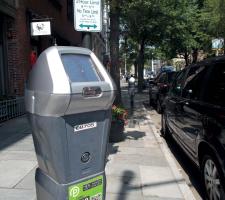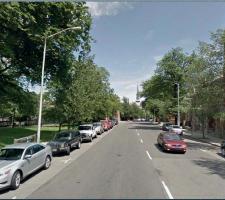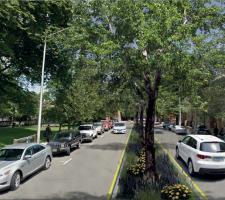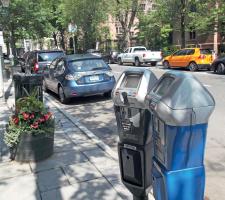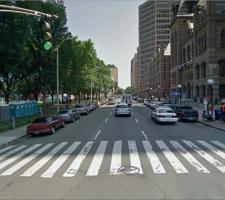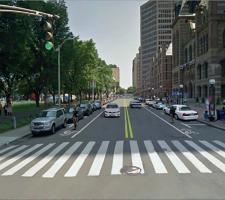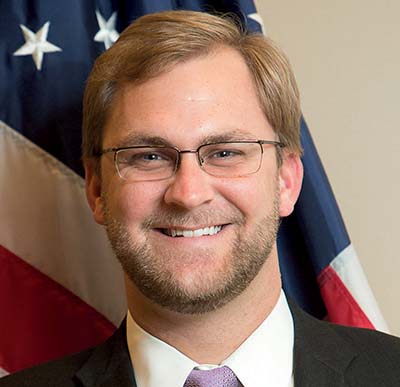
Connecticut’s new administration is using smart policy and ITS solutions to bridge social divides. Andrew Bardin Williams investigates.
With only 130,000 residents, New Haven can hardly be called a metropolis. Measuring less than 502km (18 square miles), the city is huddled against the coast, squeezed between two mountains (appropriately called East Rock and West Rock) that, at 111m and 213m (366ft and 700ft) respectively, can hardly be called mountains. The airport is small and has limited service, and the once proud maritime industry has long dried up. Most people around the world only know New Haven for its unique apizza (a style of Neapolitan pizza common in the vicinity) and as the home of Yale University. For all intents and purposes, New Haven is a small city.
Nonetheless, New Haven is an important regional hub for Southern New England and is considered the cultural capital of Connecticut. It is also home to several world-class museums, boasts an impressive hospital system, is incubating a burgeoning high tech community, hosts several international festivals and events throughout the year and has a high percentage of residents with advanced degrees. While small, there’s no doubt that New Haven has always been a progressive city—albeit one with its cyclical ups and downs.
New Haven is also in transition. Mayor Toni Harp was inaugurated in January after 18 years of John DeStafano occupying city hall, creating an opportunity to rethink how local government can affect quality of life for residents in the city. Transportation is in the forefront of this effort with city officials and civic organisations recognising that economic equality and access to jobs is reliant on dynamic regional transportation options.
The city’s new director of parking and traffic, Doug Hausladen, is leading the effort, working with the city’s disparate community groups to meet the needs of its growing and diverse population. Hausladen has been leading several public forums in support of a $1 million grant application with the
However, according to Hausladen, the city isn’t waiting, tapping into the region’s innovation to come up with smart engineering and ITS solutions to make transportation more efficient. The previous administration had already installed smart parking meters, started the conversion of some one-way roads to two-way streets and initiated bike route expansion projects. Mayor Harp’s administration has continues and in some cases extended these schemes and launched a Complete Streets initiative aimed at better integration of foot, bike and motor traffic and is looking to install a real-time transit app on monitors in downtown storefronts. These initial projects set the tone for the wholesale changes the city expects to be enacted as a result of the year-long FTA survey.
Big issues, small budget
Despite is small population and geography, New Haven is situated halfway between New York and Boston at the crossroads of two major Interstates (I-95 and I-91) and boasts a big-city transportation network. The city is the centre of 14 towns in Southern Connecticut and is a major railway hub forThe region’s 862,000 residents rely on New Haven for jobs, government and culture with tens of thousands commuting to the city each day, streaming in through a network of interstates, state highways, surface roads, passenger rail, commuter rail and bus systems. In addition, New Haven ranks as the fourth most pedestrian-friendly city in the US with 14% of its population walking to work (34% of Yale’s commuters walk, cycle or telecommute).
Even though New Haven is dealing with the same transportation issues that a New York or a Boston face, it has to meet these challenges on a much smaller city budget. According to Hausladen, in its annual budget the city earmarks $1.5 million for street paving and repairs, $1 million for sidewalk maintenance and $500,000 for its Safe Street initiative. It can also dip into a $7 million federal transportation fund set up for the region. By way of contrast, the New York City Department of Transportation has an annual budget of $710 million.
Transportation Policies
After nearly a century of decline, New Haven is going through a renaissance. Crime is down, jobs are returning and more residents are moving downtown within walking or cycling distance to work. Restaurants and shops are opening up in the rejuvenated entertainment district and the town green has been revived as a public meeting space, hosting summer concerts, farmers’ markets and cultural events. More than 15,000 people now live within four blocks of the green—a number that will continue to steadily increase with additional housing development projects in the works.“The economic downturn is over, and the city is changing,” said Hausladen while sitting at an outdoor cafe in the city’s resurgent arts district. Observing the steady stream of foot traffic passing by—elderly residents, young professionals, students and service workers, he said: “We need to make sure that our transportation policies are in line with the new American city. The system needs to be better functioning, more responsive and multi-modal.”
James Rawlins, a board member of the Greater New Haven branch of the NAACP, agrees but also sees a transportation policy that traditionally hasn’t kept up with the needs of the city’s poorest residents. He highlights the problems of residents who don’t own a car and one-car families who are unable to apply for jobs that are popping up in industrial parks outside city limits and outside the reach of the bus system. Residents from the city’s poorest neighbourhoods may be able to get there for a typical nine-to-five job, but accessibility becomes an issue when people are asked to pick up second and third shifts. It also becomes a problem when you factor in childcare and other family obligations that tend to more proportionally affect lower income citizens.
“High poverty levels are dependent on the ability to get to and from employment opportunities. We need to do a better job of creating jobs where they are accessible while expanding our transportation network,” Rawlins said. “Our transportation vision is broader than just New Haven and the central core. We want to make sure that people know to frame transportation as a civil rights issue.”
Ten-year plan
Solidifying transportation’s place in the new administration’s priorities, Hausladen has been tasked with writing a chapter in the 10-year city plan that focuses exclusively on transportation. He says the idea is to interconnect different transportation modes and put additional resources toward addressing the last mile—typically a major deterrent to widespread public transit adoption by the public. Taking his cue from Rawlins and the NAACP study, Hausladen wants to create policies that meet the needs of all the city’s residents—from the technically-savvy education and medical professionals who tend to have transportation choices to the economically-challenged residents who often do not.Freedom and economic justice is not just having a car, Hausladen explains, it’s being able to choose a transportation method that makes sense for each individual.
He is excited at the thought of the results of the year-long FTA study, should the city win the grant, and cites the evolution of Houston’s transportation strategies after it underwent a similar study several years ago. After linking economic equality with access to jobs, Houston remapped its city-wide bus route from a grid pattern to a wheel and spoke configuration to better transport workers to where the jobs were being created—and saw increased ridership as a result.
In addition to an enhanced bus system, Hausladen believes the report could recommend a new light rail line to serve New Haven’s downtown and an expansion of the colleges’ shuttle programs.Making policy that works is more than just pushing papers around city hall. Connecticut lawmakers have made it a priority to use public transit systems themselves. Many city officials walk or cycle to work and US Senator Chris Murphy (D-Conn.) regularly takes the bus. Hausladen hopes that encouraging policy makers to use public transport will avoid the unfair transportation decisions that have been made in the past—such as increasing transit fares while keeping the gas tax untouched.
Complete Streets
New Haven is one of the first municipalities to pass legislation endorsed by the National Complete Streets Coalition - a group that promotes engineering roadways that are safer for multiple modes of transportation including bikes, pedestrians and motor traffic. The city published a manual providing technical guidance on the building and repair of its streets. In addition, the first major project of the initiative, a super crosswalk being built to connect Yale’s campus with the arts district, is under construction and is funded through a partnership between the city and the university.
This isn’t the first time Yale and New Haven have collaborated on transportation projects. According to Holly Parker, director of sustainable transportation systems at Yale University, regular meetings are scheduled between the city’s transportation officials and senior university staff, and Hausladen is a frequent guest at Yale’s Traffic Safety Committee meetings. Parker also chairs a transit subcommittee for the Mayor’s Parking and Transit Working Group. In addition, Yale initiatives such as a campus-wide bikeshare program and Zipcar stations are being expanded citywide.
Real-Time Information
A new real-time transit app called
By the end of the first event, the group had a working prototype to test, and the city is confident that a viable data stream for developers will launch by the end of the year.
Smarter Parking
For those who drive into the city, parking has long been a problem, according to Hausladen. Over the past five years, the city has installed new smart meters that increase drivers’ payment options (coins, credit cards, web portal and phone app) and allows them to extend their parking period their via mobile phones. The vendor, Park Mobile, reports that New Haven had the fastest adoption in the company’s history with 15% of transactions and 9% of revenue now coming from the pay by cell option in the 12 months since deployment.
New Traffic Signals
New Haven is also upgrading 200 traffic controllers originally installed in the 1950s. After laying 160km (100 miles) of fibre optic cable throughout the city, the new controllers have been connected to a central traffic management centre. Traffic control cameras also analyse traffic flow and provide real-time data on each intersection that make the controllers more responsive to changes in traffic patterns due to events, construction and accidents.For many years New Haven has been seen as a progressive city in transition and the new Harp administration recognises that transportation is critical to make the city liveable. It has set about enacting innovative policies and ITS solutions in advance of larger changes expected in the coming years and the result will be smarter region-wide transportation strategy and better access to jobs for all city residents.
| Department | Population (2010) | Budget (2013) |
|---|---|---|
| New Haven Department of Parking and Traffic | 130,000 | $3 Million |
| City of Boston Transportation Department | 6464,000 | $22 Million |
| New York City Department of Transportation | 8.4 Million | $710 Million |


